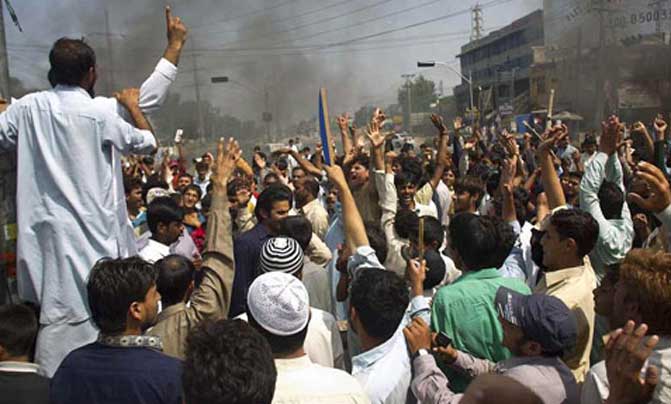Massive protests have broken out in the POJK (Gilgit Baltistan Region) over the arrest of a Shia cleric under Pakistans’ blasphemy laws. The protests are assumed to be one of the largest protests ever seen in the region, with people roaring “Chalo Chalo Kargil Chalo” in the air. The local leaders in Gilgit warned the Pakistan Administration of a civil war and, even worse, to merge with India.
Reasons for the Protests
The protests by the residents of Skardu (POJK) took place after the Shia cleric Agha-Baqir-al Hussaini was booked and arrested for his comments at a religious gathering. He was booked for his remarks at an ulema council meeting in Skardu that was held to discuss Pakistan making its blasphemy laws much stricter as an apparent move to target the Shia community.
The Shia and the Sunni follow the basic tenets of Islam, but the Shia do not idolize Islamic figures who oppose the fourth caliph, Ali. The Islamic Republic of Pakistan is a Sunni-majority nation, but the Shia community forms a big chunk of the population in Gilgit Baltistan. Starting with the regime of Zia-ul-Haq, the successive governments of Pakistan have tried to change the demographic status by moving Sunnis into the region.
Latest Shia Protests in POJK
The Gilgit-Baltistan region is divided into three major districts: Baltistan itself, Diamer and Gilgit. The main administrative centres are the towns of Gilgit and Skardu. Though there is no coverage of protests in Gilgit by the Pakistani media, the videos and images have emerged on social media, indicating the scale of agitation. This is a trickle, as most of it is not verified.
This is the result of the Pakistani establishment’s grip over communications in the region. According to the accounts on X, the initial protests were created by Sunnis who sought the arrest of the Shia cleric, and they blocked the Karakoram Highway, the lifeline that links the mountainous region to Pakistan.
The protests were in Diamer, where Sunnis are the majority. Countering these protests and the arrests of the cleric al-Hussaini, Shias have been taking out protests, the videos of which have circulated on X (formerly Twitter). The protestors have chanted slogans against Pakistan and General Asim Munir.
Videos have also shown that if the road remained blocked, people would not go to the Punjab of Pakistan or Sindh but to Kargil. They have warned of an incoming civil war if their demands to release Hussaini and the unblocking of the highway were not met.
Pakistan’s Blasphemy Laws target Minorities
In January 2023, Pakistan strengthened its blasphemy laws and extended them to such an extent that anyone offending Prophet Muhammad or any of its prominent religious figures. The amendment now lists a crime insult directed at the companions of Muhammad, such as Yazid, which is the bone of contention in this protest. Hussaini was charged for cursing Yazid, the son of Muawiya.
Hussain, the grandson of Muhammad, was killed in the Battle of Karbala on the orders of Yazid. While all Sunnis revere all the companions of the prophet, Shia Muslims do not have the same reverence for Yazid because they commemorate the martyrdom of Hussein in the month of Muharram. This is why Muharram becomes contentious in areas where the Shia and the Sunnis cohabit.
Recently, in Pakistan, the minimum sentence for people insulting the holy figures of Islam has been increased under the amended law from three to ten years in prison and a fine of one million Pakistani rupees. Human rights activists are worried about the potential persecution of minority groups, especially Shia Muslims, who have negative views of some early Muslims.
Due to Pakistan’s history of abusing these laws, the Human Rights Commission of Pakistan voiced concern that new modifications would unfairly abuse minorities and factions. This could result in unjustified accusations, abuse, and tyranny. Minorities such as Ahmadis and Christians, along with the Shia, are oppressed to a huge extent. One example is the attack on the churches in Faisalabad in Pakistan. The Pakistani government ignores this type of vigilante attacks




















Comments